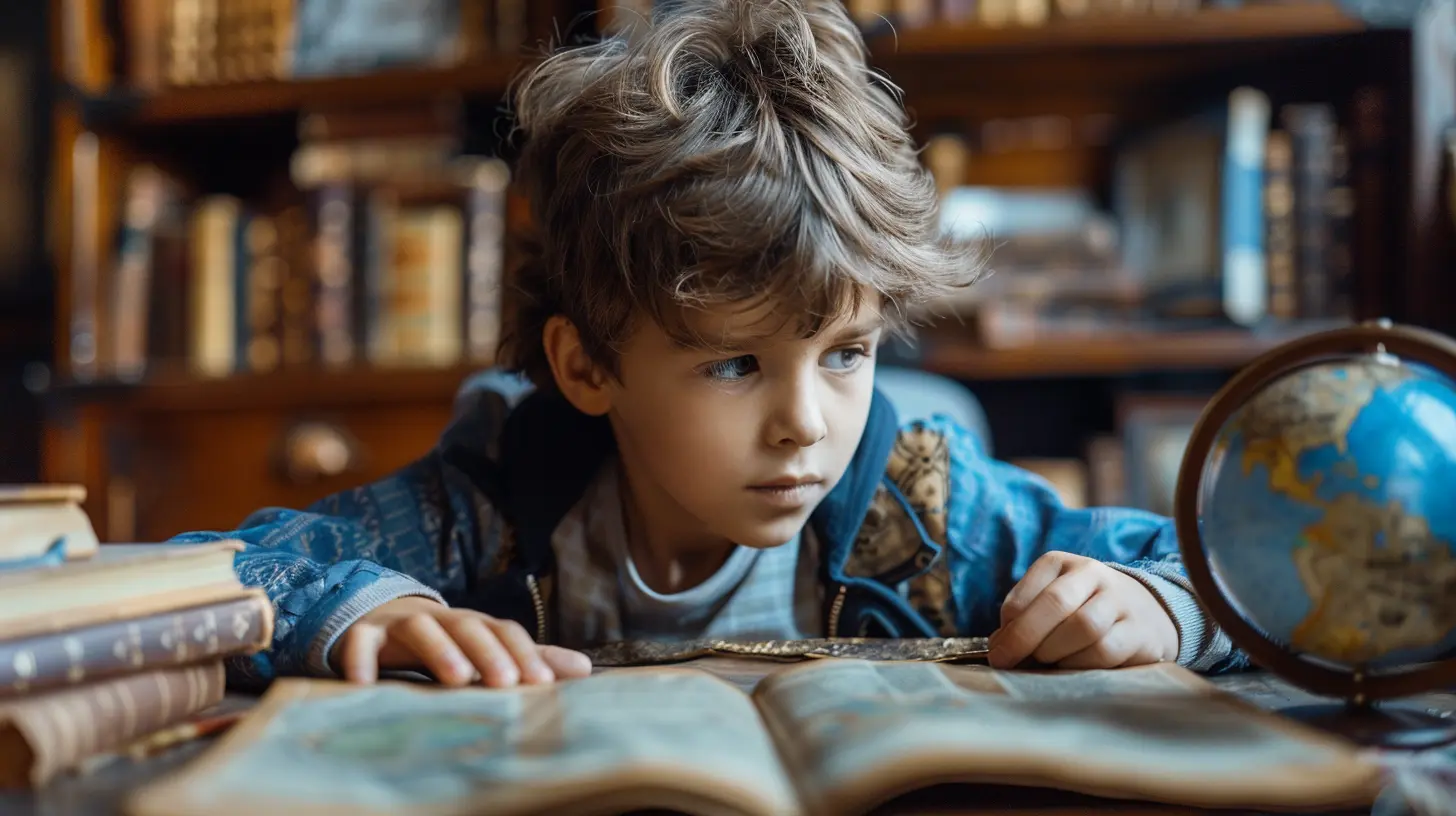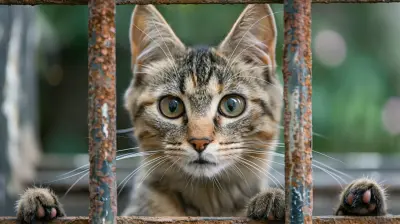How to Encourage Curiosity in School-Age Children
15 June 2025
Let’s face it — kids ask a lot of questions. “Why is the sky blue?” “How do birds fly?” “What happens if a shark and a crocodile fight?” It might test your patience (and maybe your knowledge), but here’s the truth: That endless string of “whys” is pure gold.
Curiosity is the lifeblood of learning. It’s the engine that powers creativity, problem-solving, and lifelong learning. But as our kids enter school, something strange often happens. The curiosity fades. It gets replaced by standardized tests, rigid curriculums, and “sit still and be quiet” instructions.
So, how do we keep that spark alive? How do you encourage curiosity in school-age children without turning your house into a constant science experiment or jeopardizing their school performance?
Let’s peel this onion together — layer by layer.
Why Curiosity Matters More Than Ever
Before we talk about how, let’s get real about why it matters. Curiosity isn’t just about asking questions — it’s about the hunger to understand. It fuels motivation. It makes learning stick. Kids who are curious are more likely to engage deeply in school, solve problems creatively, and stay resilient when things get tough.In a world that’s changing faster than we can say “TikTok,” our kids need to be curious. They need to know how to think, not just what to think. And guess what? That all starts at home.
1. Normalize Not Knowing Everything
Let’s be honest — adults feel pressure to have all the answers. When your seven-year-old asks how airplanes stay in the sky, your brain might scream, “Google it!”But one of the best gifts you can give your child is the simple phrase: “I don’t know. Let’s find out together.”
When you model curiosity, your child learns that not knowing is okay — even exciting. You create a safe space for asking questions without fear of sounding silly or being shut down.
Pro Tip: Keep a "Curiosity Journal" or a whiteboard where you write down curious questions that pop up, and then pick a time each week to explore the answers together.
2. Ask Better Questions
Tired of getting one-word answers like “fine” or “nothing” when you ask about school? It might be time to switch things up.Instead of:
➡️ “How was school today?”
Try:
✅ “What was the weirdest thing you learned today?”
✅ “Did your teacher say anything today that made you think, ‘Whoa, really?’”
✅ “If you could change one thing about your school, what would it be?”
Open-ended questions ignite conversations — and curiosity. They get kids thinking beyond the textbook.
3. Let Them Get Bored (Seriously)
Here’s an unpopular opinion: Boredom is not the enemy — it’s the gateway to creativity.We know it’s super tempting to fill every hour with structured activities, screen time, or “educational” apps. But when kids have chunks of unstructured time, their brains start to wander. And that’s where curiosity is born.
Give them space. Let their minds roam. They might just build a cardboard city or ask why the moon looks "closer" some nights.
Think of boredom as the soil. Curiosity grows in it.
4. Encourage Deep Dives
If your child is obsessed with dinosaurs, don’t stop at letting them memorize T-Rex facts. Help them go deeper.- Buy books (yes, actual books!) on every type of dino.
- Visit museums — dig into the bones, the history, the science.
- Watch documentaries together.
- Role-play being a paleontologist.
When you fan the flames of their current obsession, you’re showing them that their interests matter — and that knowledge is a playground, not a prison.
5. Celebrate Mistakes as Learning Opportunities
Here’s a truth bomb: Fear kills curiosity. And perfectionism? That’s curiosity’s worst enemy.If your child is afraid to be wrong or embarrassed about a failed experiment, they’ll stop taking intellectual risks. That’s not what we want.
So normalize failure. Laugh about goof-ups. Talk about times you didn’t know the answer or totally flubbed something. Make your home a judgment-free zone for learning.
Say things like:
➡️ “Whoa, that experiment didn’t work the way we thought. What do you think happened?”
➡️ “Let’s try it a different way.”
➡️ “Great question — you’ve got me thinking!”
6. Curiosity-Friendly Environments Matter
Your home doesn’t have to be a full-blown science lab (unless you’re into that). But small changes can make a HUGE impact.- Create a curiosity corner: A small shelf with interesting books, puzzles, science kits, or a globe can be a magnet for little minds.
- Put out conversation starters: A bowl of random objects (old keys, shells, magnifying glasses) can spark questions.
- Rotate materials: Just like in Montessori classrooms, rotating toys, books, or activities reignites interest.
The idea? Make wonder part of the daily scenery.
7. Be Curious About Their World
Sometimes we forget that the things kids care about — like Minecraft, slime videos, or five-minute craft tutorials — are their own kind of learning.Instead of brushing it off, lean in. Ask:
➡️ “Why do you like this game?”
➡️ “How do you build that?”
➡️ “What’s something most people don’t know about this?”
When you show interest in their interests, you’re telling them it’s okay to be curious about what they love — even if it’s not academic.
Connection is the bridge to deeper conversations. Always.
8. Limit the Rote Learning
Let’s not sugar-coat it. Traditional schooling often rewards memorization over exploration.That’s where we, as parents, swoop in.
If your child is just cramming for a science test, push beyond the superficial. Help them ask “why” and “how,” not just “what.”
➡️ “Why does light bend in water?”
➡️ “How do plants ‘drink’ through their roots?”
➡️ “What would happen if humans photosynthesized?”
These questions create memory hooks. They connect concepts. They light up the brain.
9. Let Curiosity Lead the Way — Even If It's Messy
Curiosity is rarely clean or convenient. It often shows up at bedtime. It sometimes looks like a tornado of LEGO bricks on the floor.But trust me — those moments, the ones where your child is neck-deep in a wild idea — those are the moments where growth is happening.
So resist the urge to over-direct. Don’t shut down experiments because they’re messy or inconvenient. Sit in the chaos a little. That’s where the magic lives.
10. Be Their Curiosity Coach, Not Just Their Parent
You don’t have to know everything. You don’t have to be a STEM genius or an art historian.Your role? Be their curiosity champion. Ask the questions. Go down the rabbit holes. Wonder out loud. Cheer them on.
Whether it’s digging into alien life, building catapults, or wondering why cats purr — you’re nurturing a mindset that says, “Let’s keep asking.”
And that is what matters most.
Final Thoughts: Helping Kids Stay Wonder-Full
Curiosity isn’t something we teach — it’s something we protect.It’s already in there, bubbling under the surface. Your job isn’t to force it. It's to make space for it, feed it, and let it run wild. Because a curious kid becomes an inspired adult. And the world desperately needs more of those.
So the next time your child asks something strange, off-beat, or totally random... don't brush it off. Smile, dive in, and say the words every curious kid loves to hear:
“That’s a great question — let’s find out.
all images in this post were generated using AI tools
Category:
Education TipsAuthor:

Max Shaffer
Discussion
rate this article
3 comments
Aria McGarvey
Foster questions; ignite their limitless potential!
June 23, 2025 at 3:41 AM

Max Shaffer
Absolutely! Encouraging questions is key to fostering curiosity and unlocking a child's full potential. Let's inspire exploration!
Natasha Hayes
Encouraging curiosity involves fostering a safe environment for exploration, asking open-ended questions, and celebrating discoveries.
June 18, 2025 at 3:50 AM

Max Shaffer
Absolutely! Creating a supportive atmosphere and promoting open dialogue are key to nurturing curiosity in children.
Elora Reilly
Fostering curiosity in our children ignites their passion for learning! Let’s celebrate their questions and explorations—each moment is an opportunity for growth and discovery!
June 17, 2025 at 4:15 AM

Max Shaffer
Absolutely! Encouraging curiosity not only enhances learning but also fosters a love for exploration. Celebrating their questions is key to nurturing their growth.



